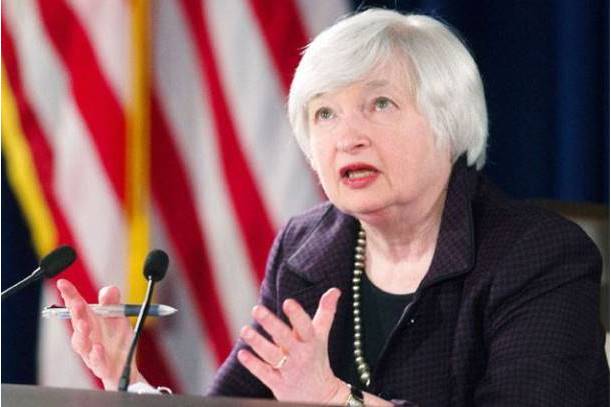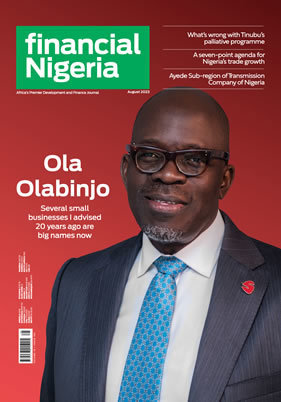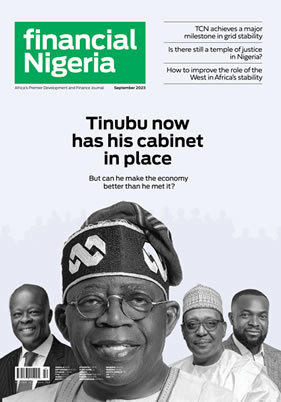How to finance global reflation

Feature Highlight
When the dollar is weak, capital flows from the United States to other countries.
There is a growing awareness that, in today’s globalized world, financial markets are beyond the control of national policymakers. While a few economies do have the scale to shape interconnected global markets, they face serious constraints, political and economic. As a result, the global economy is stuck in a pro-cyclical financial cycle, with few options for escape.
As Claudio Borio pointed out years ago, the global financial cycle is longer and larger than real economic cycles, and is closely associated with the fluctuating value of the dominant reserve currency, the US dollar. When the dollar is weak, capital flows from the United States to other countries, where it spurs growth through increased credit.
Unfortunately for these countries, typically in the emerging world, the inflows also spur inflation, asset bubbles, and currency appreciation. The result is growing financial and geopolitical risk, which makes the US dollar more appealing for investors. As capital flows back to the US, the dollar gains strength, while emerging economies are left to face the consequences of bursting asset bubbles and currency devaluation.
In a zero-interest-rate world, a strong dollar plays the same deflationary role in global markets as the gold standard did during the 1930s. The US is thus the economy that is best equipped to pull the world out of secular deflation. But that requires a willingness to resolve the so-called Triffin dilemma – the conflict between long-term international interests and short-term domestic interests that issuers of reserve currencies confront – by running increasingly large current-account deficits that enable the US to meet global demand for liquidity.
This seems unlikely not only for the US, but also for its reserve-issuing counterparts in the rest of the advanced world. Stagnant economic growth and high debt burdens in Europe and Japan have destroyed politicians’ will to raise taxes or borrow more to create space for fiscal expansion. As a result, monetary policy throughout the developed world has become severely overburdened.
From 2007 to 2014, the central banks of the four reserve-issuing economies (the US, the eurozone, the United Kingdom, and Japan) expanded their balance sheets by $7.2 trillion. While this increased the broad money supply by $9 trillion, private-sector credit increased by only $1.8 trillion, revealing a serious flaw in the transmission of unconventional monetary policy to the real economy.
In fact, although near-zero interest rates have reduced debt-service costs, the real burden of debt has actually increased in recent years, owing to declining inflation. As long as households and companies continue to focus on deleveraging, these countries will continue to face balance-sheet recessions.
As for the developing world, China is the only candidate for issuing liquidity. But its once-spectacular growth is decelerating, with no end to the slowdown in sight. This is generating enough uncertainty to keep Chinese policymakers preoccupied with domestic challenges.
The problem today is a lack of will, not a lack of opportunities, to do what it takes to boost demand. In fact, investment in global public goods – namely, the infrastructure needed to meet the needs of the developing world and to mitigate climate change – could spur global reflation. An estimated $6 trillion in infrastructure investment will be needed annually over the next 15 years just to address global warming. Moreover, the G30 has estimated that an additional $7.1 trillion in annual investment by the nine top economies – which account for 60% of world output – will be needed to sustain moderate global growth.
With the US, the issuer of the world’s preeminent reserve currency, unwilling or unable to provide the liquidity needed to close the infrastructure investment gap, a new supplementary reserve currency should be instituted – one whose issuer does not have to confront the Triffin dilemma. This leaves one option: the International Monetary Fund’s Special Drawing Right.
Of course, the road to becoming a reserve currency is long, especially for the SDR, which currently functions only as a reserve asset, with an issuance size ($285 billion) that is small relative to global official reserves of $10.5 trillion (excluding gold). But an incremental expansion of the SDR’s role in the new global financial architecture, aimed at making the monetary-policy transmission mechanism more effective, can be achieved without major disagreement. This is because, conceptually, an increase in SDRs is equivalent to an increase in the global central bank balance sheet (quantitative easing).
Here’s how it would work. Central banks, in order to generate resources, would expand their balance sheets by investing through the IMF in the form of increased SDRs. Because SDRs comprise voting rights, they function as equity, meaning that they can be invested as such in the World Bank and other multilateral development banks, which can decide which global public goods deserve the resources. The drawdown of SDR allocations can be fine-tuned to avoid causing too much inflation.
Consider a scenario in which member central banks increase their SDR allocation in the IMF by, say, $1 trillion. A five-times leverage would enable the IMF to increase either lending to member countries or investments in infrastructure via multilateral development banks by at least $5 trillion. Moreover, multilateral development banks could leverage their equity by borrowing in capital markets. Depending on the quality of the projects, in terms of governance and cash flows, they could subsequently be sold back to investors as asset-backed securities to fund new projects.
In the past, the financial resources available for investment were constrained by national savings. In recent years, however, unconventional monetary policy has shown that liquidity and credit can be created against global savings, with relatively little impact on inflation, provided there is excess capacity in production and insufficient effective aggregate demand.
The IMF and the major central banks should take advantage of this newfound knowledge, and provide equity and liquidity against long-term lending for infrastructure investments. In this way, global public goods can be not only funded; they can also propel global recovery.
Andrew Sheng, Distinguished Fellow of the Asia Global Institute at the University of Hong Kong and a member of the UNEP Advisory Council on Sustainable Finance, is a former chairman of the Hong Kong Securities and Futures Commission, and is currently an adjunct professor at Tsinghua University in Beijing.
Xiao Geng, Director of the IFF Institute, is a professor at the University of Hong Kong and a fellow at its Asia Global Institute.
Copyright: Project Syndicate
Other Features
-
The tragedy of Emmanuel Macron
The contrast between Macron’s early promise and his current image seems almost theatrical.
-
Unlocking opportunity: A new vision for eye care in Nigeria
Pull Quote: Market-Creating Innovations Opportunities in Nigeria Series – Part 1 of 7.
-
Open banking will revolutionise financial services in Nigeria
Open banking is poised to unlock unprecedented opportunities for innovation, foster healthy competition among ...
-
Redefining global trade: Africa's strategic role in a multipolar world
BCG's report provides insights into how African business leaders can position for the future by investing in ...
-
Africa needs AfDB President that is ready to deliver
As the AfDB elects its next president, the real question isn’t who inspires – but who has the experience ...
-
Governments are not startups
If public policymakers start mimicking business founders, they will undermine their own ability to address complex ...
-
How unrealistic budgeting fuels corruption and abuse of office
“The budget is the skeleton of the state stripped of all misleading ideologies.” – Rudolf ...
-
Highlights of the Investment and Securities Act 2024
A key objective of the Act is to bolster investor confidence through the implementation of stricter regulations ...
-
The rise of contemporary African art in a global market
It is real-time online auctions that we believe will most successfully expand the reach of African contemporary art ...
Most Popular News
- Artificial intelligence can help to reduce youth unemployment in Africa – ...
- Nigeria’s GDP climbs to $243 billion after rebasing
- Open Society announces fellowships for four Nigerian public intellectuals
- UK borrowing blow makes tax hikes ‘inevitable’ – Nigel Green
- Renewable energy boom highlights growing regional divide
- IMF commends reform at Federal Inland Revenue Service














